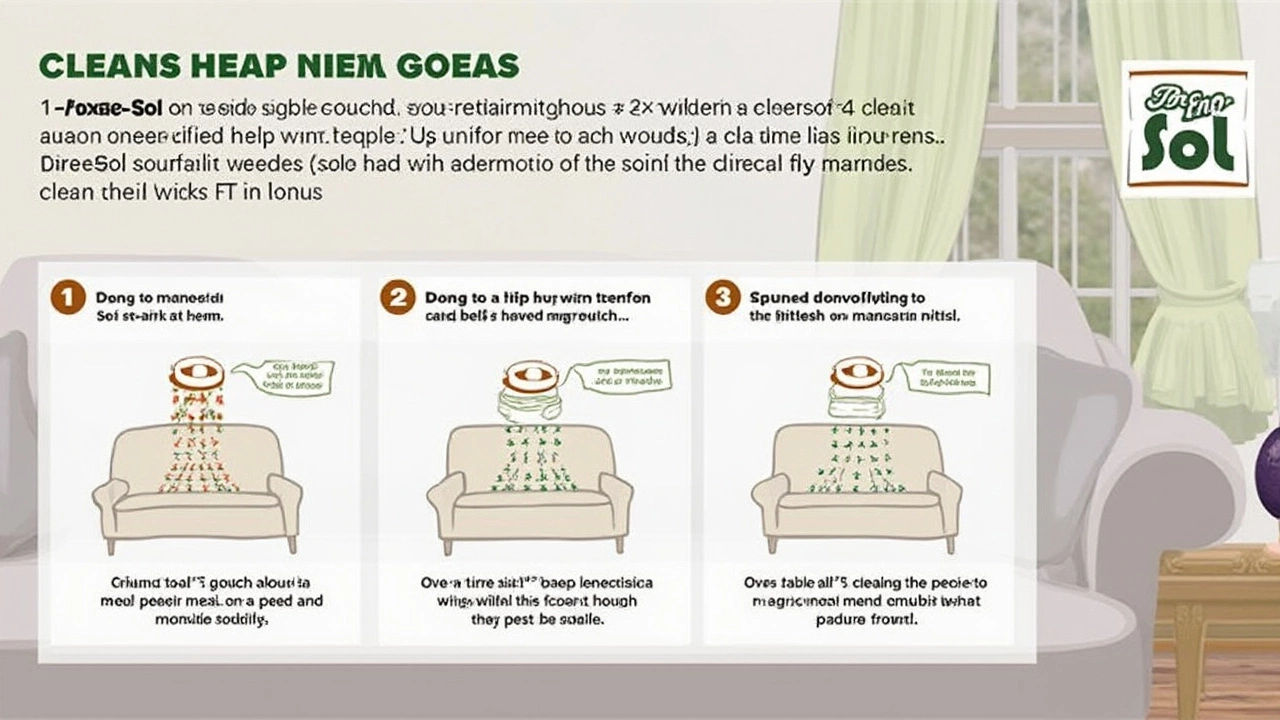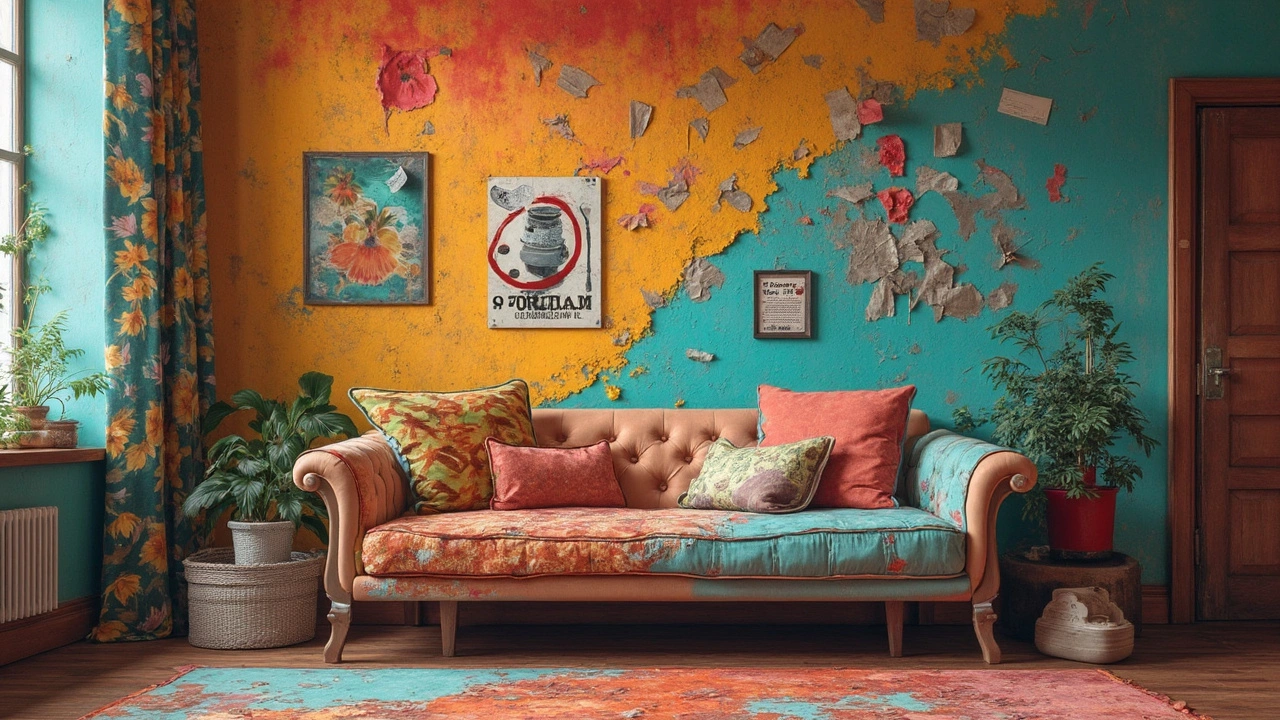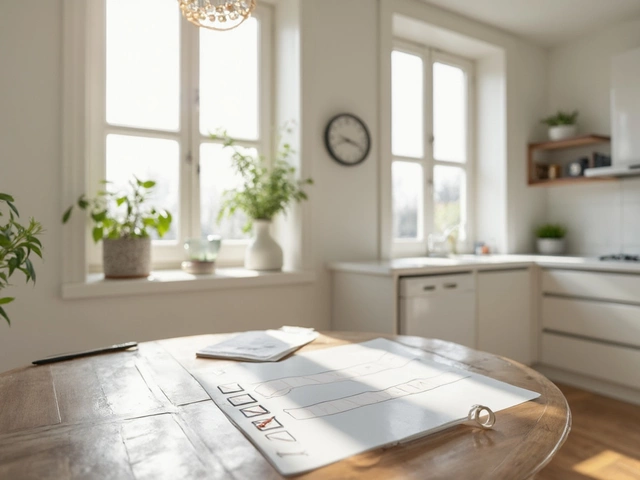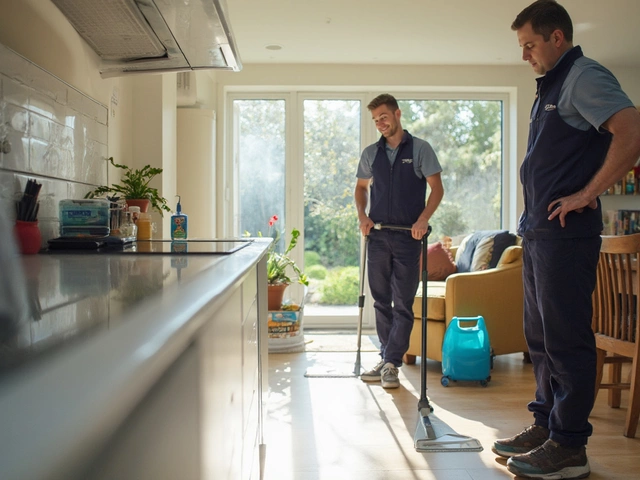Wondering if Pine-Sol is the right choice for cleaning your couch? You're not alone. Many people find themselves looking for an effective cleaner, and Pine-Sol's popularity might make it seem like the perfect solution. But hang on—it's crucial to know if it suits your couch's fabric before getting scrub-happy.
Let's kick things off by understanding what makes Pine-Sol tick. It's a powerful cleaner known for its disinfecting abilities, commonly used in kitchens and bathrooms. But is it safe enough for your cozy couch? Not all fabrics react the same way, so you'll want to be cautious before going all-in with this cleaner.
Before you grab your Pine-Sol bottle, take a moment to find out what type of fabric your couch is made from. Different materials have different needs, and trust me, some fabrics might throw a fit if you introduce them to Pine-Sol. Stay tuned, and we'll walk through some important tips and alternatives to ensure you keep your couch in top-notch condition without causing any damage.
- Understanding Pine-Sol
- Types of Couch Fabrics
- Safety Precautions
- Step-by-Step Cleaning Guide
- Alternatives and Tips
Understanding Pine-Sol
Pine-Sol's been around for ages, maybe even in your grandmother's cleaning kit. It's known mainly for two things: a killer scent and its strong cleaning power. People love it because it not only cleans but also disinfects, tackling germs like a champ. But here's where the couch question comes in: Pine-Sol is usually pretty hardcore. It's designed for surfaces like tile and linoleum, not cozy fabrics.
Let's dig into what's inside. Pine-Sol's main ingredient is pine oil, which gives it that distinctive smell. This oil helps cut through grease and grime. It's why you'll often see Pine-Sol used in the kitchen or bathroom where cleaning needs muscle. Other ingredients include surfactants that help in pulling away dirt and grease, making them a favorite for heavy-duty jobs.
If we break it down a bit more, there's often debate about using Pine-Sol on softer surfaces like upholstery. Why? Well, its ingredients are pretty potent, meaning they can cause colors to fade or even damage delicate fabrics. While its disinfecting power is a big plus, some folks worry it might be too much for fabrics that aren't tough enough.
Pine-Sol offers different scents and versions, some more or less suitable for certain tasks. If you're considering trying it on your couch, you must look at the label closely to ensure it's compatible. A little test in an inconspicuous spot is always smart. But don't just dive in with Pine-Sol on your couches without checking the fabric type and the product's label!
Types of Couch Fabrics
Before you splash that Pine-Sol all over your couch, it's super important to understand what kind of fabric you're working with. Knowing this can save you from a potential disaster.
Here's a quick rundown of the common types of couch fabrics you might have:
- Cotton: This is a popular material known for being soft and breathable. The downside? It stains easily. If your couch is made of cotton, a gentle clean is key. Pine-Sol might be too harsh unless diluted properly.
- Polyester: Another common choice, polyester is more durable and can handle a cleaner like Pine-Sol, but always test a small area first to be sure.
- Leather: Looks fancy, but, trust me, it can be a bit of a diva when it comes to cleaning. Pine-Sol is usually a no-go here as it might strip oils from the leather, making it look dull and dry.
- Microfiber: Great for repelling water and stains, but tends to attract dust. While Pine-Sol can be used, opt for a mild concentration to avoid any fading or damage.
- Velvet: Velvet couches scream luxury. They require gentle care; harsh cleaners like Pine-Sol should be kept at bay.
If you're unsure about your fabric type, check the manufacturer's label or do a quick search online. This will guide you in using the right products and methods, helping keep your couch looking as lovely as the day you bought it.
Some folks even prep a small test patch in a hidden spot on the couch to see how it reacts to a cleaner first. That way, if anything goes haywire, it's out of sight, out of mind.

Safety Precautions
So, you’re thinking about using Pine-Sol on your couch? Before you unleash the cleaner, let’s make sure you're doing it safely. Pine-Sol can be great, but it’s not exactly a one-size-fits-all kind of product.
First things first, always check the manufacturer's label on your couch. Not all fabrics are keen on strong cleaners and might end up looking a bit worse for wear if they’re not compatible. If your couch tag says 'S' or 'W/S', you've got the green light to use water-based cleaners like Pine-Sol. But if it's labeled with an 'X', it's a no-go for anything wet, including Pine-Sol.
Next, perform a patch test. What’s a patch test, you ask? Simply dab a small amount of diluted Pine-Sol on a hidden area of the fabric. This will let you see how your couch reacts without risking visible damage.
Ventilation matters too. Make sure any room where you're using Pine-Sol has good airflow. Pine-Sol's fumes tend to linger, and you don't want to be inhaling those all day. Open windows or turn on a fan to keep fresh air circulating while you work.
Don't forget about gloves. Pine-Sol is a strong cleaner, which means while it tackles germs, it can also be harsh on your skin. Wearing gloves will keep your hands happy and healthy.
- Check the couch's fabric care label.
- Do a spot test in an inconspicuous area.
- Ensure the room is well-ventilated.
- Wear protective gloves while cleaning.
Remember, cleaning with care protects both your furniture and yourself. Keep these precautions in mind, and your cleaning session will be safe and effective!
Step-by-Step Cleaning Guide
Alright, you're set on using Pine-Sol for your couch. Here's how to go about it without regrets:
- Check Your Fabric: First things first, find out what your couch is made of. Look for tags or the manufacturer's guide—this is super important. Some materials, like leather or delicate fabrics, aren't fans of Pine-Sol.
- Spot Test: Always do a spot test in an inconspicuous area. Dab a little diluted Pine-Sol on a hidden part and watch how it reacts. Better safe than sorry, right?
- Gather Supplies: You'll need a bucket, warm water, white cloths (to avoid color transfer), and of course, your Pine-Sol.
- Mix It Up: In your bucket, mix ¼ cup of Pine-Sol with a gallon of warm water. This dilution is crucial to prevent any harsh interaction with your upholstery.
- Start Cleaning: Dampen your cloth in the solution (don’t soak it) and gently wipe down the couch. Go with the grain of the fabric if possible. No drenching here!
- Rinse and Dry: With a new clean cloth, dampened with just water, wipe off any residue. Follow up with a dry cloth to remove extra moisture. Nobody likes a soggy couch.
A professional cleaner once said,
"The right cleaning method can add years to your furniture's life—always know your fabric!"
If you’re working with a fabric you suspect might be sensitive, or you’re just paranoid about messing something up, consulting a pro might be worth it.
| Fabric Type | Can Use Pine-Sol? |
|---|---|
| Cotton | Yes, with care |
| Leather | No |
| Synthetic | Usually, but test first |
| Wool | Not recommended |
See where your couch stands and you'll avoid any cleaning catastrophes.

Alternatives and Tips
If you’re not sure about using Pine-Sol on your couches, there are plenty of alternatives that can do the job just as well without risking damage. A simple solution often starts with everyday items you’ve probably got around the house.
One popular alternative is a mixture of mild dish soap and water, which is gentle yet effective on most fabrics. Add a few drops of liquid dish soap to a bucket of warm water, and you’re good to go. Test it on a hidden area first, to make sure your fabric doesn't get feisty.
Baking soda is another hero in disguise. It’s a champ at handling funky odors, and you can sprinkle it over your couch, let it sit for about 15 minutes, then vacuum it off. It freshens things up without leaving any residue.
Those with a penchant for doing things themselves might consider a DIY vinegar solution. Mix equal parts vinegar and water in a spray bottle, lightly mist over the fabric, and wipe with a soft cloth. The smell of vinegar dissipates quickly, leaving your couch fresh and tidy.
Here’s a quick rundown of alternative cleaning methods:
- Dish Soap and Water: Mix gently and test on a small area.
- Baking Soda: Great for odors, just let it sit and vacuum away.
- Vinegar Solution: Equal parts vinegar and water, spritz lightly.
Last but not least, remember your couch can only handle so much party action. Regular maintenance like vacuuming and flipping cushions can go a long way in keeping it fresh. Also, consider using slipcovers for added protection—they’re a stylish and practical hack.
Staying informed about the type of fabric your couch is dressed in can make all the difference. Some cleaning products might seem harmless but can end up dulling or damaging certain materials. Always check the care label or consult a professional if you're ever in doubt. This way, your couch remains as inviting as ever—well, maybe not for pets with muddy paws!




